
Mobilize Your Community
Mobilizing your community is a crucial part of the process of recovering from a wildfire. This guide provides information to help local governments and community leaders get started on recovery coordination.
Wildfires that create wide-scale damage require a community-scale response for recovery. One of the greatest challenges is coordinating such a large effort. This section provides key points to help you get started.
Establish a Post Fire Coordinator
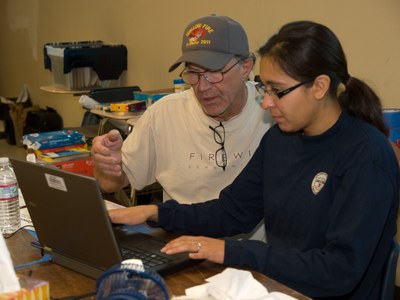 In small communities, subdivisions or neighborhoods, residents should appoint a Post Fire Coordinator (or a few coordinators) to work directly with local, state or federal agencies, emergency response officials and others others to help in a coordinated response. The Post Fire Coordinator does not need to be an elected official, they can be a community volunteer such as the lead of a Neighborhood Watch Group or of a Firewise Community effort.
In small communities, subdivisions or neighborhoods, residents should appoint a Post Fire Coordinator (or a few coordinators) to work directly with local, state or federal agencies, emergency response officials and others others to help in a coordinated response. The Post Fire Coordinator does not need to be an elected official, they can be a community volunteer such as the lead of a Neighborhood Watch Group or of a Firewise Community effort.
It can also be someone who is just a member of the community; two sisters, just 20 and 24, filled this role after a freak tornado hit their town. To see their inspiring story and the resource they built (recovers.org), visit their TED talk.
The coordinator will need to work closely with local elected officials, emergency response personnel, volunteers and other stakeholders to address needs and seek assistance. They will need to play a strong leadership role to help their community on the path to recovery.
Skills that are helpful for the coordinator to have include:
- Proven management skills and knowledge of the community
- Internet skills (assists in communication with the public or using a site such as recovers.org)
- Experience with government agencies and programs and working across jurisdictions
- Someone that already has a community network in place
- Willing to engage throughout a fire, and during and after the BAER (Burned Area Emergency Response)
- Bilingual skills may be needed in some areas
You may want to plan for multiple coordinators to help share responsibilities. for example, there could be coordinators for different phases such as a coordinator during the fire, and another to coordinate the response after the wildfire (focusing on rebuilding, flooding, restoration, etc.).
Support for the Post Fire Coordinator(s)
While the Post Wildfire Coordinator should handle many of the community coordination tasks, others are responsible for local governance and incident response. Local officials will be responsible for providing governance which includes serving as the collective decision-making body of the community, ensuring fiscal accountability and responsibilities are met, providing for public health and safety, and keeping community members informed. The local emergency manager will work with state and federal partners to handle the disaster response and immediate needs.
The Post Fire Coordinator is a very important position after a wildfire. However, the job will be demanding and may be emotionally taxing. The coordinator should get help from volunteers, assess community needs, build a team for support, and reach out for immediate resources. For help with emotional resiliency and support, see these resources.
Clearly Identify Community Response Roles
 Responsibility for the numerous tasks required for community wildfire response is divided among many different people. Ensure everyone knows what each person’s roles and responsibilities are. It is very important for the Post Fire Coordinator to know who the agency and local government representatives are and the role each one plays following a disaster. The Post Fire Coordinator should also be able to communicate that information to others.
Responsibility for the numerous tasks required for community wildfire response is divided among many different people. Ensure everyone knows what each person’s roles and responsibilities are. It is very important for the Post Fire Coordinator to know who the agency and local government representatives are and the role each one plays following a disaster. The Post Fire Coordinator should also be able to communicate that information to others.
Ensure Assigned Roles are Not Overstepped
The Post Fire Coordinator for your community needs to ensure that the people on their team do not overstep their assigned roles. The Post Fire Coordinator should familiarize himself or herself with the roles of government response teams. Likewise, elected officials should not infringe upon the responsibilities of the emergency response team, and must not act individually. Many decisions after a wildfire must be made by the collective governing body.
Examples of Government Response Teams & Systems
There are several government response teams that your community is likely to interface with after a wildfire. These include:
- BAER Teams: BAER (Burned Area Emergency Response) teams work on federal land after a wildfire to mitigate damage caused by the wildfire, and often provide information about a wildfire to the public and partners. BAER teams work with other federal, state, local and tribal governments informing those agencies of the risk to downstream communities and areas after a wildfire. Click here for a pdf about BAER teams.
- Incident Command System: Large wildfires will have an Incident Command System. Find out more so you know how to best communicate and interface with this system.
Assess Your Needs
Who do you need at the table to help with recovery? Assessing your needs is an important step in mobilizing your community. The community's Post Fire Coordinator should identify the tasks needed in a post wildfire situation (a ‘needs assessment’). The Post Fire Coordinator should then build a community team of support to carry out the identified tasks (this team is different from government emergency response teams that come up elsewhere in this guide). Answering the following questions can help you identify appropriate individuals for your team.
- Is there paid staff available to help after a wildfire?
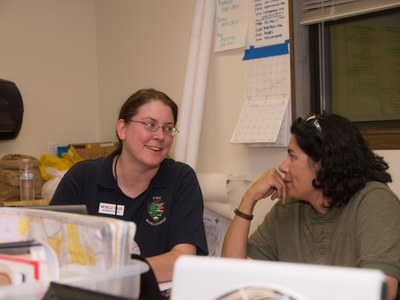
- Who knows the Incident Command System (ICS)?
- Who has technical and engineering skills to assist with on-the-ground rehabilitation?
- Who has writing skills to prepare grant proposals and to submit documents required to apply for assistance?
- Should your community (or individuals) raise fund from private donations to fill the gaps of the help provided?
- Who are the administrators that can handle grants and attend funding-related meetings?
- Who has accounting skills? Meticulous bookkeeping is critical!
- Who can assist a community with immediate shelter, food and medication needs?
- Who can provide emotional support and counseling?
-
Who has mapping (Geographic Information Systems) skills?
- Who has local knowledge of the landscape and any pre-existing issues such as eroded areas?
- What are key values that are at risk after a wildfire, and can something be done to protect these? Refer to our flooding and post-fire treatments sections of the website.
- Who can help neighbors with clean up, building fences, etc? For example, there may be elderly people who can not do it themselves, or neighbors who have so much to do it is overwhelming.
- Who has knowledge of the local land tenure? This may be especially important for Tribes and Pueblos, or for Land Grant communities.
- Determine if you are going to use volunteers for any of the above tasks. If so, you will need someone to recruit and manage volunteers. For tips on working with volunteers, click here.
- To get you started on who might help fill these needs, visit the Who Can Help section.
Communication
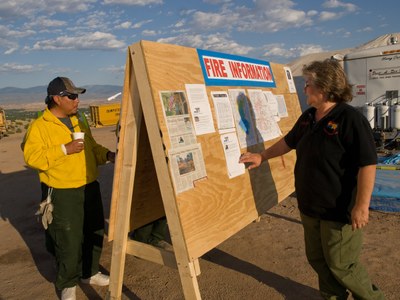 An important step in mobilizing your community after a wildfire is to develop a process of communication. Below are considerations for developing a communication plan in the wake of a destructive wildfire.
An important step in mobilizing your community after a wildfire is to develop a process of communication. Below are considerations for developing a communication plan in the wake of a destructive wildfire.
- Point of Contact: Let the appropriate people know who the Post Fire Coordinator is and how and when to reach them.
-
Communication with Multiple Entities: Determine how local officials, emergency response teams, stakeholders, and volunteers will interface and communicate with your community team built upon your needs assessment.
-
Getting the Word Out: Decide the best way to inform the broader community through outreach such as public meetings, phone calls, radio, TV or social media. Be creative and resourceful; for example, after the Tres Lagunas fire, San Miguel County Emergency Management set up local radio reporters in the canyon so residents had access to 24 hour flood alerts.
-
Online tools such as recovers.org can help you communicate with the public and match volunteers to needs.
-
Use the 'After Wildfire Toolkit' , which provides communication templates for you to customize such as door hangers, press releases and public service announcements.
-
Communicate Hazards that Exist After a Wildfire: Convey post-wildfire hazards such as those covered in immediate safety. Flooding after wildfire is a common hazard, for example. For more information on post wildfire flooding, visit our Flood Information section. For actions to take to help the land and to help mitigate flood risk, visit our Post-Fire Treatments section.
- Emergency notification: Find out if your local government and institutions (like labs and universities) have an emergency notification system that allows emergency officials to alert residents and businesses to emergency situations and relay life-saving information. Encourage your team members and residents to sign up if the system requires registration. Third party systems such as Nixle (a free alert system) also exist.
Reach Out for Immediate Resources
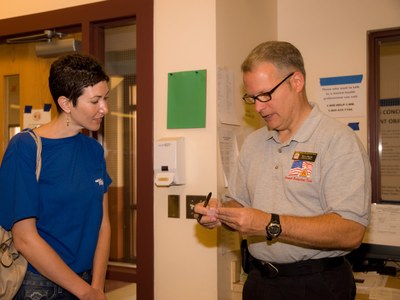 After a destructive wildfire, communities are in need of assistance and resources. However, many grants take time to apply for and receive. Early in the response phase, reach out for immediate resources.
After a destructive wildfire, communities are in need of assistance and resources. However, many grants take time to apply for and receive. Early in the response phase, reach out for immediate resources.
- The New Mexico Department of Homeland Security and Management (NMDHSEM) is often the best place to start and can assist communities in identifying resources. The community Post Fire Coordinator or elected official working on behalf of a community may call them at 505-476-9635. The NMDHSEM and Federal Emergency Management Agency (FEMA) work together to respond to disasters and collaborate on both public assistance and hazard mitigation programs.
- Collaborate and network with outside entities. For example, reach out to the New Mexico Association of Counties and the New Mexico Municipal League. You may be able to learn from officials who have recently been in a similar situation.
- Think about reaching beyond state borders for assistance: Consider reaching out to other states that have teams or experiences that can help you. For example, after the Little Bear Fire in Ruidoso the community hired a team from Austin to assist with the post-fire recovery. Additionally, Team Rubicon is a group that "unites the skills and experiences of military veterans with first responders to rapidly deploy emergency response teams."
- The American Red Cross responds to disasters 365 days a year and can assist impacted individuals with their immediate emergency needs: http://www.redcross.org/newmexico, Call 1-800- RED CROSS, (1-800-733-2767).
- Search for Additional Financial Assistance: Agencies and organizations provide a variety of programs and services to assist communities and individuals recovering from wildfire. To help you get started, we have provided information and links to financial tips and opportunities for assistance.
Working With Volunteers
The amount of work to be done in the wake of a disaster can be daunting, and with wildfire, recovery often takes years of work. Volunteers can help your community recover from wildfire by carrying out the projects you do not have allocated resources for. Here is a list of tips and suggestions to aid you in successfully utilizing volunteer help.
1. Identify a Volunteer Coordinator: This should be someone personable and organized, with prior management experience. Your coordinator can take a lead in:
- Handling volunteer requests
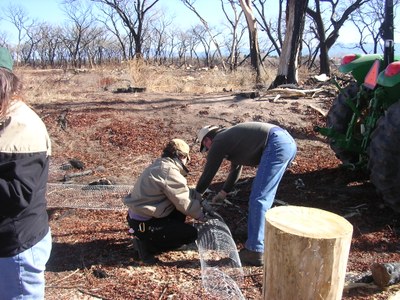
- Handling volunteer offers and screening volunteers
- Creating and maintaining the volunteer database
- Tracking of volunteers, services and donations
- Matching the right volunteer with the right project
- Reviewing project proposals
- Researching and obtaining funding and resources for projects
- Recruiting volunteers through social media, press releases, and outreach opportunities, if needed.
2. Assess Resources: Working with the skills and the tasks you have identified for your community, ask yourself the following questions:
- What jobs need to be done that we do not have the resources for?
- What tasks can be done by volunteers?
3. Recruit Volunteers: Typically, volunteers with the following skills will be needed:
-
Patient, kind, knowledgeable people to answer telephones
-
Well-organized and detail-oriented people to handle volunteer applications, enter information into computer databases, and make follow-up calls
-
People willing to get dirty (cleanup, filling sandbags, raking, seeding and related activities). When working with volunteers on physical jobs, safety is paramount. Ensure people are properly trained, and keep groups small (about seven people with each volunteer leader; the leader should be trained in the work you are implementing and have very brief written instructions on the task at hand). Keep instructions simple and clear for hands-on work.
-
Seasoned and strong outdoor types who can lift and place heavy wattles, logs or bales of straw
-
People with professional skills such as grant writing, accounting, legal skills, and media and outreach skills
4. Motivate volunteers, but keep them from going "overboard": volunteers can injure themselves or experience overwhelm or fatigue. Monitor volunteer well-being to avoid dangerous situations.
5. Have a plan for addressing liability and injury issues. This includes the creation of a volunteer waiver and release of liability forms. These forms can also include a volunteer or work agreement to help ensure your projects get completed.
6. Find Tasks for People Who Want To Help: If possible, rather than turn away someone who wants to volunteer, try to find the right job for that person. Allowing community members to pitch in and help out not only provides needed labor but can also promote community cohesion and advance their personal healing process. To help match volunteers with needs, use online resources such as recovers.org.
6. Maintain a Volunteer Database: Developing a volunteer database is an important step. Each project and community will require different information, but at a minimum should include:
- First Name, Last Name (or name of organization and primary contact)
- Address, City, County, State, Zip Code
- Work Phone and extension, Home Phone, Mobile Phone
- Email Address
- Date of Birth (or adult or minor)
- Skills/Type of work volunteer is willing to perform and any relevant experience or expertise
- Availability
Planning is Important
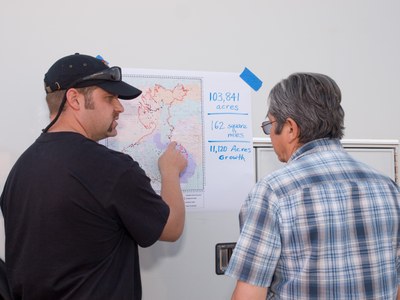 You may not have to start planning the recovery process from scratch. A growing number of New Mexico communities have adopted an all-hazard mitigation plan that addresses wildfire response. If your county, tribe, pueblo or municipality already has a plan, many of the tasks on the next few pages will have been done for you. If your community doesn't have a plan in place, this guide will help you identify steps to take.
You may not have to start planning the recovery process from scratch. A growing number of New Mexico communities have adopted an all-hazard mitigation plan that addresses wildfire response. If your county, tribe, pueblo or municipality already has a plan, many of the tasks on the next few pages will have been done for you. If your community doesn't have a plan in place, this guide will help you identify steps to take.
If you are reading this before a wildfire has occurred, the most important thing you can do is plan ahead.
Does my Community Have a Plan?
To see the status of your community's Hazard Mitigation Plan, check the 'Mitigation' page from the New Mexico Department of Homeland Security and Emergency Management. For links to existing New Mexico Community Wildfire Protection Plans from State Forestry, which may be useful in a post-wildfire situation, click here. You may also try an online search for a plan for your community; for example, Angel Fire has a wildfire plan here that does not appear on the other sites mentioned.
Key Items for Planning
In addition to resources such as a Hazard Mitigation Plan, keep these key points in mind:
- Document your community or home through photographs in case you need to use images after a wildfire for financial purposes.
- If a wildfire happened, who would I need at the table to help with the recovery process? Think about social recovery as well to provide for items such as food, medication, supplies and support such as counseling.
- How will your community come up with match for grant funding? Planning ahead for finances and for volunteers, etc. can assist your community in recovery.
- If a wildfire occurs, how do we address the threat of post-wildfire flooding? Often fires in New Mexico and in the southwest are followed by monsoon rains; what can we do to protect our water supply and communities?